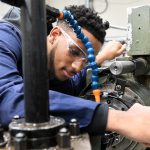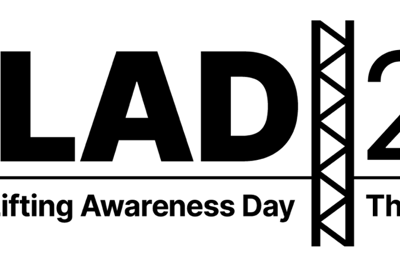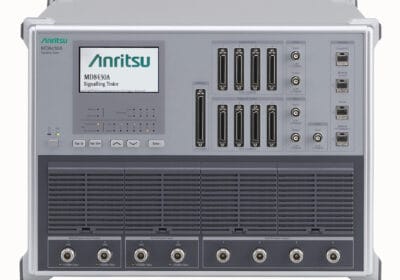AUTHOR: Jean-François Chartrel, Bostik Engineering Adhesives Global Head of PD & TCS
Sustainability is a big word, and a key driver for every manufacturing business. But sustainability means different things to different people. To some it means reducing the use of potentially harmful chemicals in the manufacturing process; to others, it means reducing the manufacturing time, and improving efficiency; to another group it may mean reducing the number of parts, especially plastic, and improving their carbon footprint.
So how does the choice of adhesive affect sustainability at potentially every level?
Adhesive manufacturing
One of the key factors is in how the adhesive itself is manufactured. ‘Traditional’ methods of manufacturing face a number of challenges. Typically, they consume large amounts of energy and generate high levels of waste. Controlling potentially harmful emissions is similarly an issue. New manufacturing processes have been developed that overcome these issues and more.
Latest techniques, including those used in the manufacture of or MECA (Methoxyethyl Cyanoacrylate) -based Cyanoacrylate (CA) adhesives, for example, have no such issues. The process consumes considerably less energy than conventional manufacturing techniques while delivering a higher yield (estimated at between 95% – 98% on average) and creating less waste. It is also a much ‘cleaner’ process all round, allowing for far greater control of emissions.
Faster curing times
The performance of the adhesive is also important. A product with a faster curing time (but without sacrificing performance) enables the manufacturing process to become more efficient.
When it comes to CA adhesives specifically, new patented ‘Light Cure’ technology is certainly helping in this regard. A conventional UV technology requires at least one transparent surface to cure, which means it is not effective on non-transparent materials, limiting its application. New ‘dual cure’ technology, however, is different; it has two curing mechanisms, combining light (UV) and contact (humidity).

This new generation of CA dual cure adhesives are designed for bonding applications that require fast fixturing, coating, or surface cure. The UV sensitivity allows rapid bonding through transparent parts, and quick curing of light-exposed bulk or surface coated areas. The instant bonding capability of Light Cure CA adhesives also ensures curing between opaque substrates, giving designers and manufacturers much greater flexibility.
To give some idea of the speed with which CA adhesives cure, without light exposure, bonding time is recorded at approximately 60 seconds; with light curing, that time is closer to 5 seconds. The implications on sustainability and efficiency of the manufacturing process are obvious, not to mention the impact on cost.
The use of LED lamps is a major source of energy saving (this is true across both ‘traditional’ UV and the most current dual cure systems) and is a very penetrating source of light (so it does not just cure on the surface) making it more efficient. The dual process is quicker and uses less energy than conventional UV systems. It also negates the need for any post-curing, further improving efficiencies.
The performance of the adhesive has an impact on sustainability in other ways. The volume of adhesive dispensed is reduced (when using manual or automated dispensing equipment) and dual-cure technology allows the assembly of multiple substrates on the same production run which would not be possible (or as efficient) with mechanical fasteners.
Glass, metals and plastics can all now be accommodated with ease, as well as leather and even woven products, allowing the precision bonding of small parts within complex designs: perfume bottles that combine metal with glass; hearing aids and speakers; luxury goods such a leather shoes and bags; expensive glass and crystal; and high-class jewelry. MRO and Automotive Aftermarket segments can also benefit from adhesives that allow for maintenance and repair.
(Indeed, the processes that use UV curing to bond components gain a further advantage in terms of flexibility and sustainability. When these products are end of life, or in need of repair, parts can be easily dismantled through the further application of heat, allowing those components to be recycled or re-used. This is proving very popular, for example, in smartphone manufacturing and repair.)
Reducing waste
A benefit of adhesives generally is that they help to reduce waste since they often replace the need for solder or screws, though in certain processes (the assembly of an aircraft fuselage, for example) a rivet may be used to further secure the bond. Cure-on-demand high-precision process is highly welcome in manufacturing and allows for exclusion of non-cured adhesives from bonded substrates and parts.

As a general trend, however, the enhanced bonding characteristics and performance of a new generation of adhesives is helping to reduce the number of parts typically used in a finished product. This means that often complex designs can be further simplified and rationalized, making them lighter and typically requiring less energy to make. Fewer parts also equates to better use of resources and less waste, thereby supporting a manufacturer’s sustainability credentials. An accelerated production line and manufacturing process also supports a higher margin in sometimes low-margin businesses.
A sustainable business must first and foremost be sustainable itself, and new thinking in adhesive product development is helping manufacturers to meet their sustainability targets while delivering a more efficient manufacturing process.








